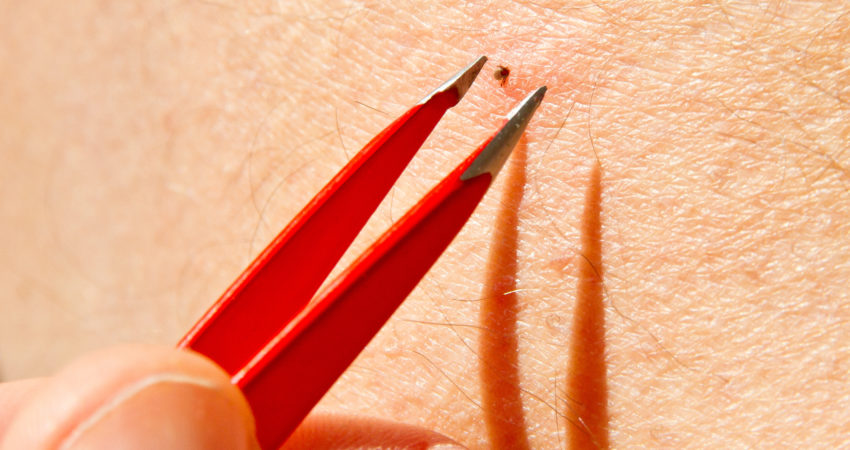Archives
Select Archives- March 2021
- July 2019
- June 2019
- May 2019
- March 2019
- February 2019
- January 2019
- November 2018
- October 2018
- September 2018
- July 2018
- June 2018
- May 2018
- April 2018
- March 2018
- February 2018
- January 2018
- December 2017
- November 2017
- October 2017
- September 2017
- August 2017
- July 2017
- June 2017
- April 2017
- March 2017
- February 2017
- January 2017
- December 2016
- November 2016
- October 2016
- September 2016

Properly Removing a Tick
Whether you’re camping, hiking in the woods, or even just hanging out in your own back yard, ticks have long plagued every nook and cranny of the outdoor world. This leaves room for concern with every brush up against a wayward patch of grass or stroll under the trees. It is almost inevitable that at some point in one’s life, they will come into contact with one or more of these harmful pests. In the event that you find a tick on you or a pet, it is important to know the proper method for safely removing the offending parasite.
Steps for Tick Removal
If you find a tick anywhere on you or a pet’s body, there is no need to panic. While several retailers sell specific tools for tick removal, a perfectly effective tool for safely removing a tick is a set of fine-tipped tweezers. In order to remove a tick using tweezers, follow these instructions:
Step 1: Use the fine-tipped tweezers to grasp the tick as close as possible to the surface of the skin, where the tick will have latched on with its mouth.
Step 2: Pull directly away from the skin in a perpendicular manner using even, steady pressure; do not twist or jerk the tick as this can cause parts of its mouth that have latched on to remain embedded in the skin. If you follow these instructions, but parts of its mouth still remain attached, do not attempt to dig out the mouth pieces; rather, just leave it alone and allow it to heal.
Step 3: After removing the tick from the skin, thoroughly clean the area of the bite with rubbing alcohol or soap and water.
Step 4: Dispose of the tick using any of the following methods: placing it in a sealed bag or container, submersing it in alcohol, wrapping it tightly with tape, or flushing it down the toilet. Do not attempt to crush the tick with your fingers.
Do not attempt any remedies that involve applying a substance and waiting for it to detach. Common misconceived solutions include applying nail polish or petroleum jelly, or using heat to get the tick to detach. These are not advised, as the goal in removing a tick is to do so as quickly as possible to best prevent any diseases or other issues.
What to Do After
After removing a tick, keep an eye on the affected area of the next few days or even weeks. If any symptoms such as a rash or a fever occur, it is possible that the tick transmitted a disease during the time it was attached. Contact a doctor, informing them of the recent tick bite, the timeframe of when the tick bite may have occurred, and the likely location in which it occurred.
If you have a problem with ticks in your area, learn more about how to protect you and your property with an all-natural pest killer from Tick Killz. Visit our website to find a retailer online or near you.
